
Installing trim can give your home a finished, polished appearance. Learn how much it costs to install trim and what factors affect how much you’ll pay.
These key elements are crucial to building the stairway to your personal heaven
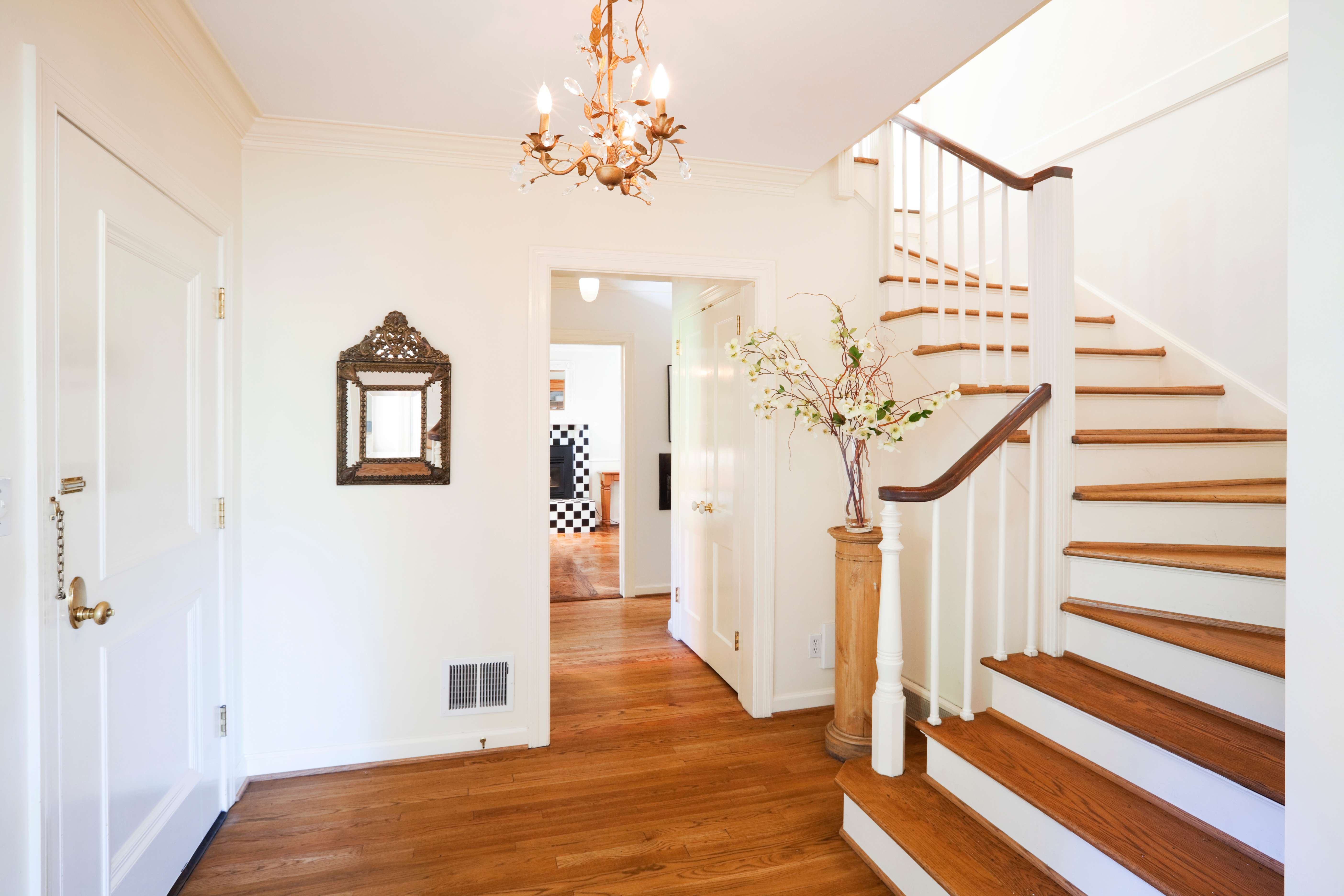

Banisters and balusters are both part of a balustrade, but they aren’t the same.
Banisters are also known as the handrail.
Balusters are also known as spindles and connect the stairs to the handrail.
Both structures provide support and protect against staircase safety hazards.
There are many parts of a staircase, but aside from the steps themselves, balusters and banisters may be the most well-known. Despite their prominence, it’s not always clear how they differ—or even know which is which. A banister is the staircase’s handrail, and a baluster is what connects the handrail to the step. However, these features have more important differences that are helpful to understand if you’re undertaking a staircase project.
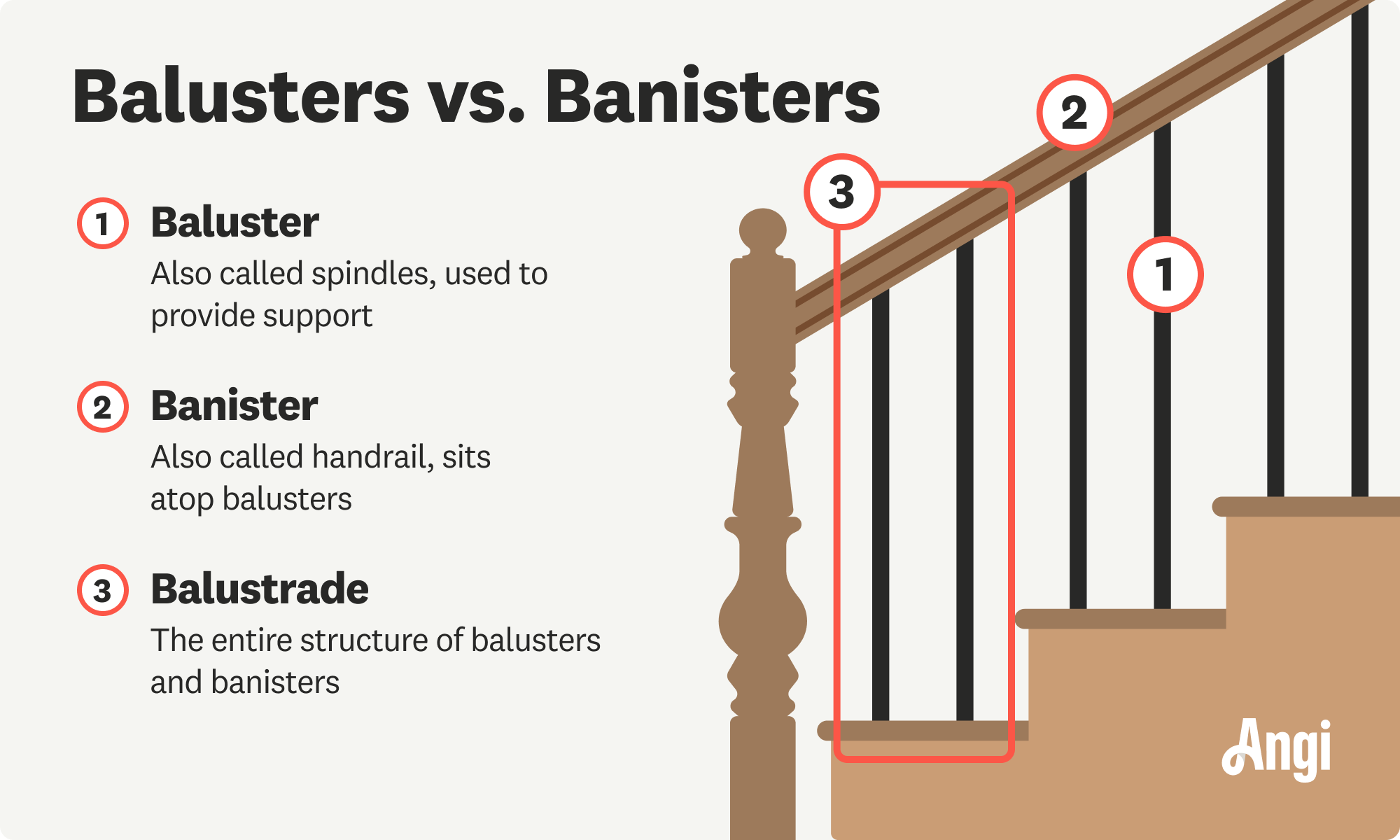
Folks have lots of questions about staircases— after all, these home features are more complicated than they appear—and one of the biggest inquiries among them has to do with the differences between balusters and banisters.
Balusters, also called spindles, are the vertical pieces that connect the top surface of a step to the handrail. They have two functions: creating an aesthetic appeal and providing a protective barrier between the edge of the stairs and the drop-off point. They can be made from many different materials and in a wide variety of styles, from simple and straight to decorative and winding.
The handrail that sits atop them is also known as the banister. Banisters can be part of a staircase or a way to meet railing height codes on a deck or balcony. They offer hand support when ascending a staircase and are typically held into place by both the balusters and other structural staircase components like the posts.
| Type of Difference | Baluster | Banister |
|---|---|---|
| Installation | Installed vertically | Installed horizontally |
| Protection | Provide a supportive structure | Helps you keep your balance on the stairs |
| Maintenance | Clean and polish as needed | Clean and polish every few weeks |
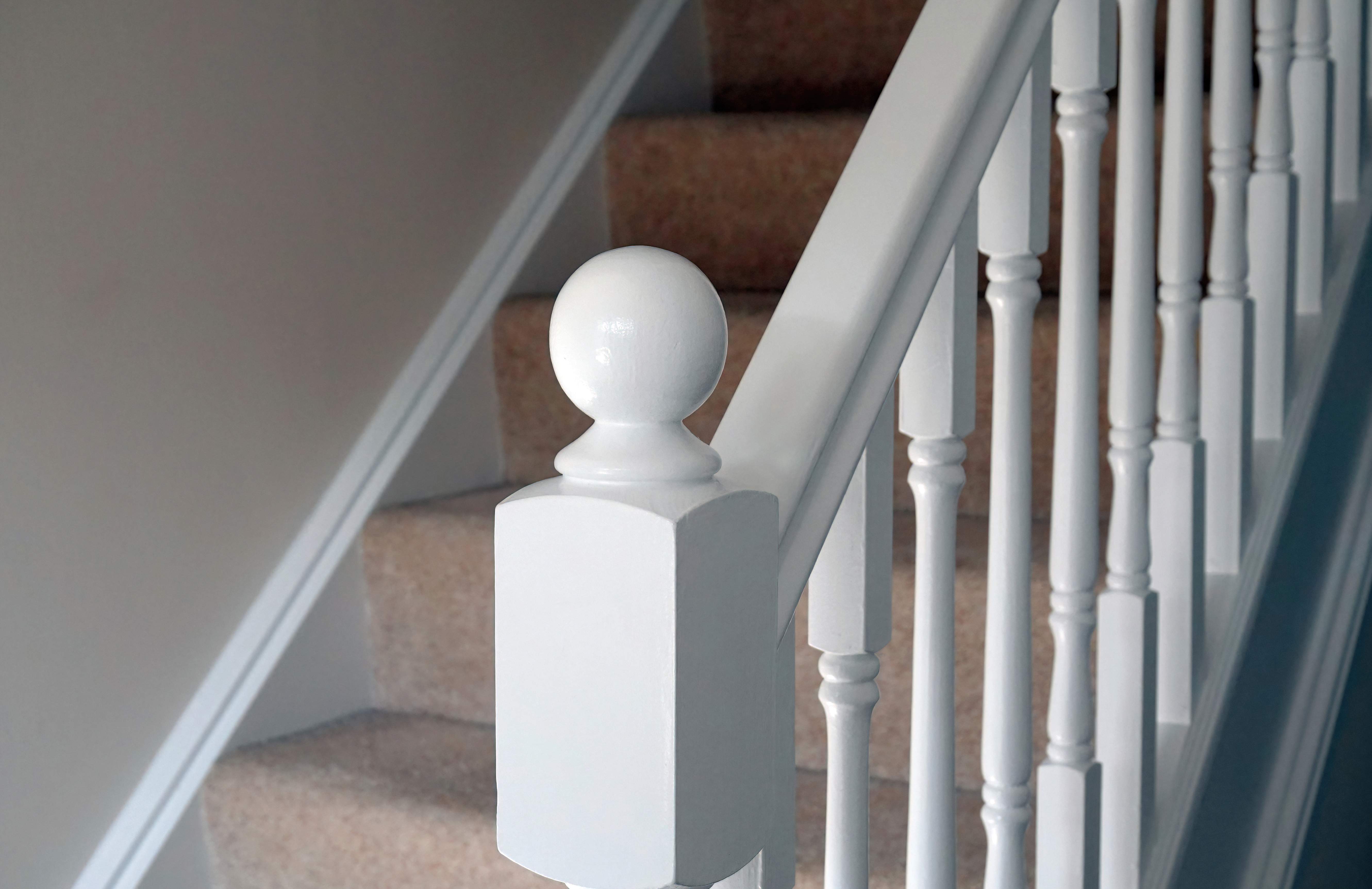
Despite their symbiotic relationship, these two staircase parts function differently—here’s how.
Balusters and banisters work together to reduce safety risks associated with staircases, but how they do it is slightly different. Banisters offer support when climbing up and down the stairs, providing a place to put your hand so you’re less likely to slip and fall down the steps. They also add an extra inch or two to the height of the setup overall, making it less likely that you’ll take a tumble over the handrail as well.
By contrast, balusters protect the blank space between the banister and the stairs and reinforce the banister to prevent premature damage or collapse.
Balusters are installed and ascend vertically along the edge of a staircase to connect the top of the steps with the banister. The banister follows the same incline, but is installed horizontally on the tops of the balusters.
Balusters should be installed before banisters, but you also don’t have to worry about removing the banister to replace a single spindle—simply take the correct measurements and pop it back in with the right tools, or hire a staircase company near you to make the fix instead.
Replacing a broken handrail is a bit more complicated. You may be able to fix dent or chip in a single place by sanding it down and refinishing it, but if the structural integrity is failing in multiple spots you’ll need to invest in a new one entirely.
Balusters also don’t get as much hand traffic as banisters and, therefore, don’t require as much post-installation maintenance as the latter. To avoid noticeable fingerprints or a faded finish, banisters should be cleaned and polished as needed.
Balusters and banisters can match, but they can also look completely different—it all depends on your preferences. Here’s a peek at how they vary aesthetically.
Staircases are often an afterthought in interior home design, but they can have a big aesthetic impact on your space. For instance, you can create a unique impact by pairing balusters and banisters of different colors and styles.
Try pairing complementary colors—like a blue handrail with burnt orange spindles—for an eye-catching duo. Alternatively, you could try combining two different styles—like early 20th-century wood carved spindles with a black metal handrail for an anachronistic vibe. Not into mixing it up? Making it matchy-matchy is fair game, too.
Just because your balusters are made from one material doesn’t mean that your banister has to be as well. Mixing and matching different substances can create a striking set-up that speaks better to your personal style, or maybe even helps you cut down a bit on the cost to install stair railing. As long as it’s up to code, you’re in the clear.
The dimensions of a handrail are set in stone—it has to be long enough to fit the length of your staircase—but exactly how many balusters you need isn’t always evident. The good news is that the max space between spindles should be no more than four inches, so calculating the right amount won’t take long.
A balustrade is the combined structure created by the banister and the balusters. They are required by law on staircases above a certain height—typically three steps or more—though you’ll want to double-check your local building codes to make sure you have the right specifications.
From average costs to expert advice, get all the answers you need to get your job done.

Installing trim can give your home a finished, polished appearance. Learn how much it costs to install trim and what factors affect how much you’ll pay.

When calculating the cost of building a treehouse, consider the size, types of materials, and design. This guide will help you figure out what to budget.
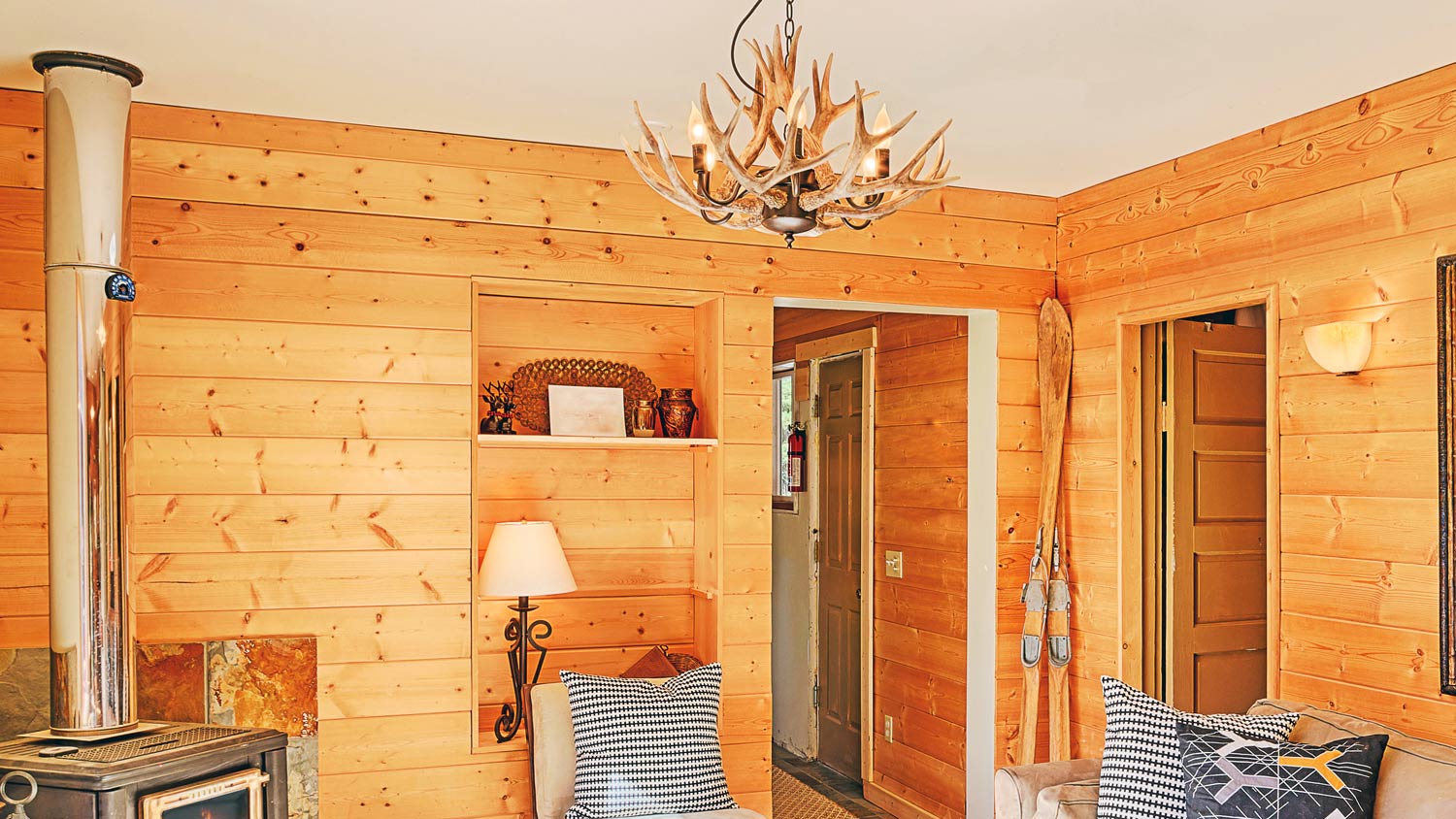
Get the facts on the cost to remove wood paneling, including average prices, key factors, and tips to help you budget your project with confidence.
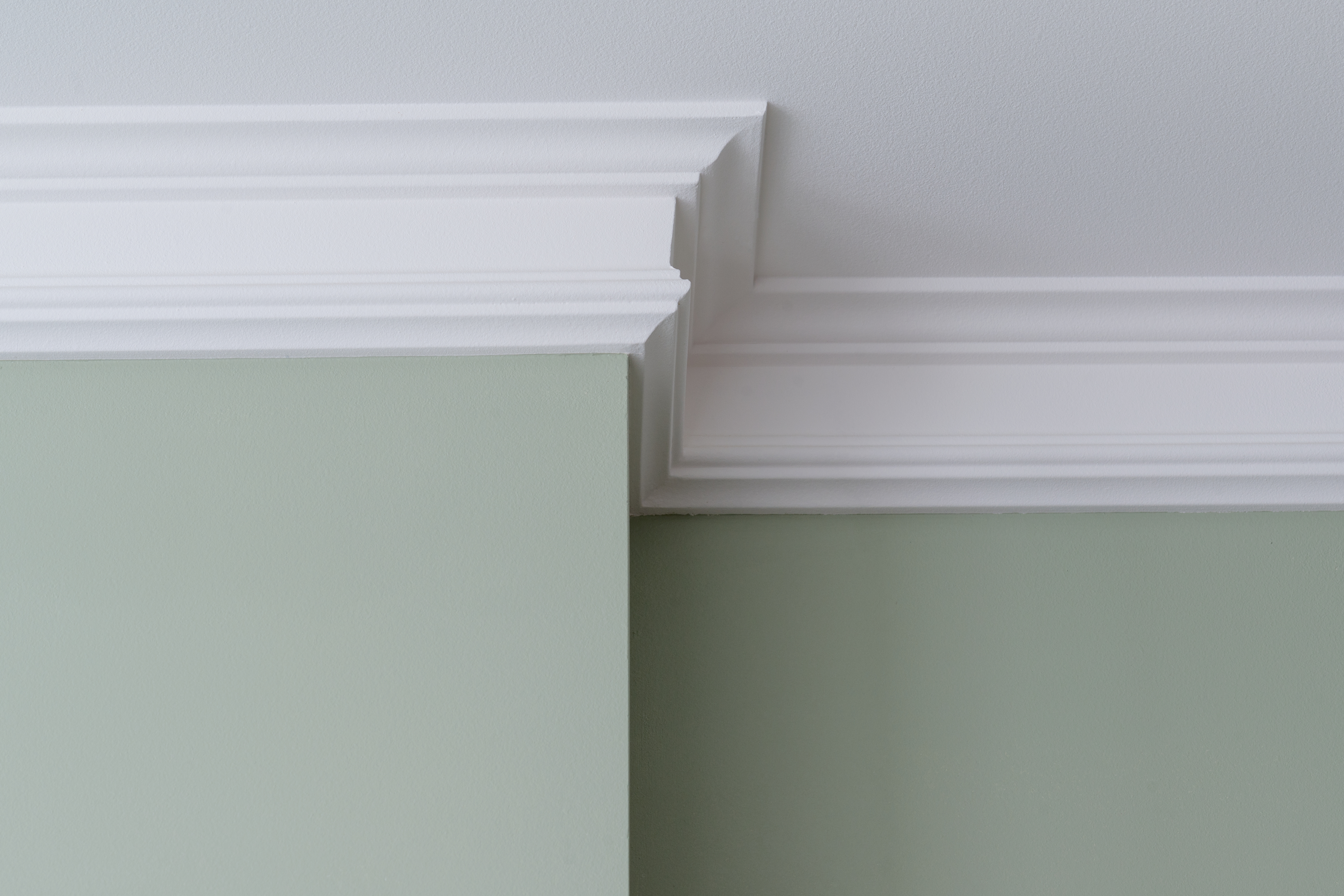
When comparing foam crown molding versus wood, foam offers multiple advantages, especially with price. However, wood has a traditional look that’s tough to beat.
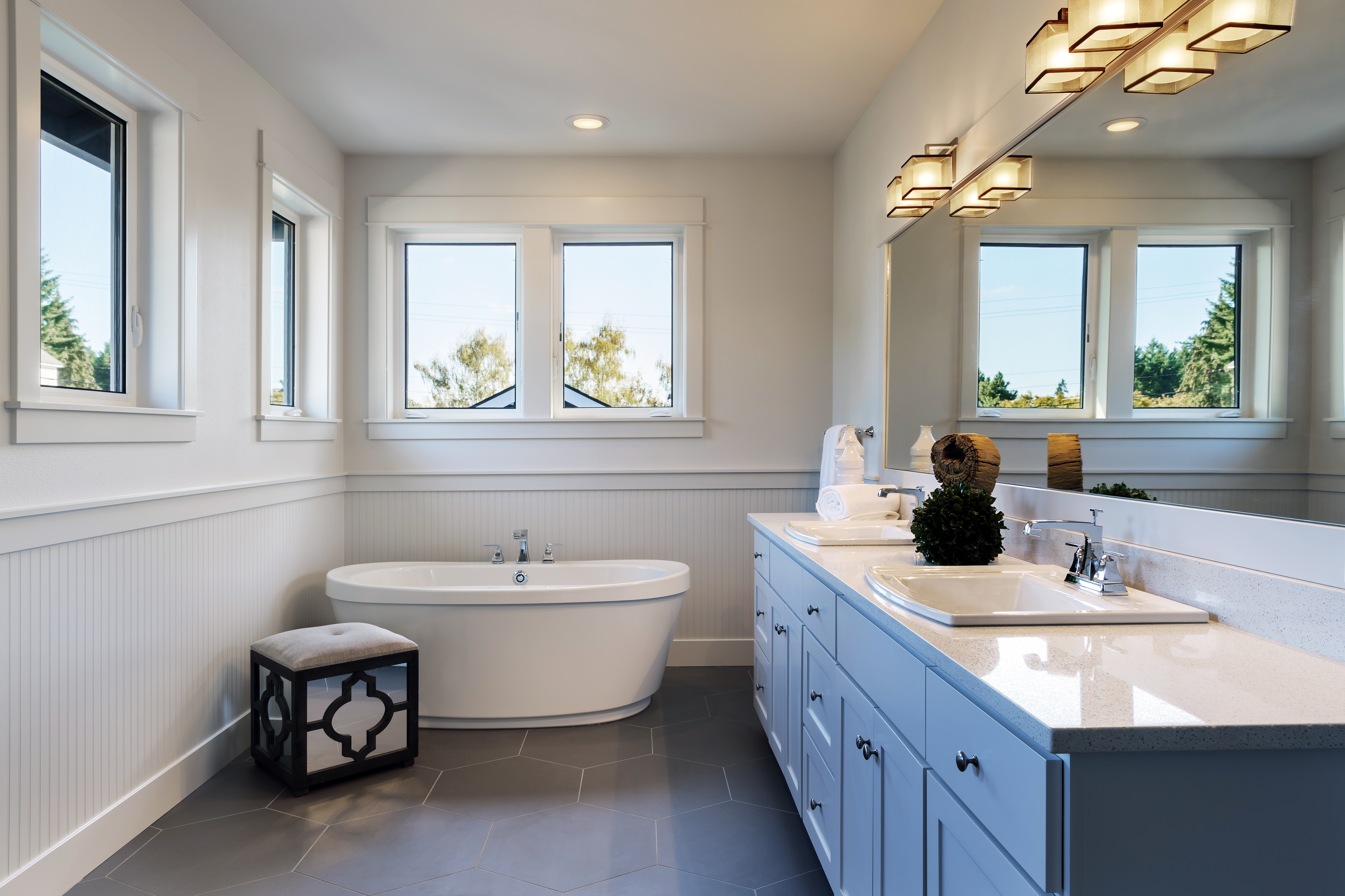
Moisture-resistant materials are a must in a bathroom. Learn which materials are the best baseboards for bathrooms to fight water damage.

We explore the differences between caulk versus wood filler for your project. Learn which is best for sealing, filling, and repairing damaged wood.